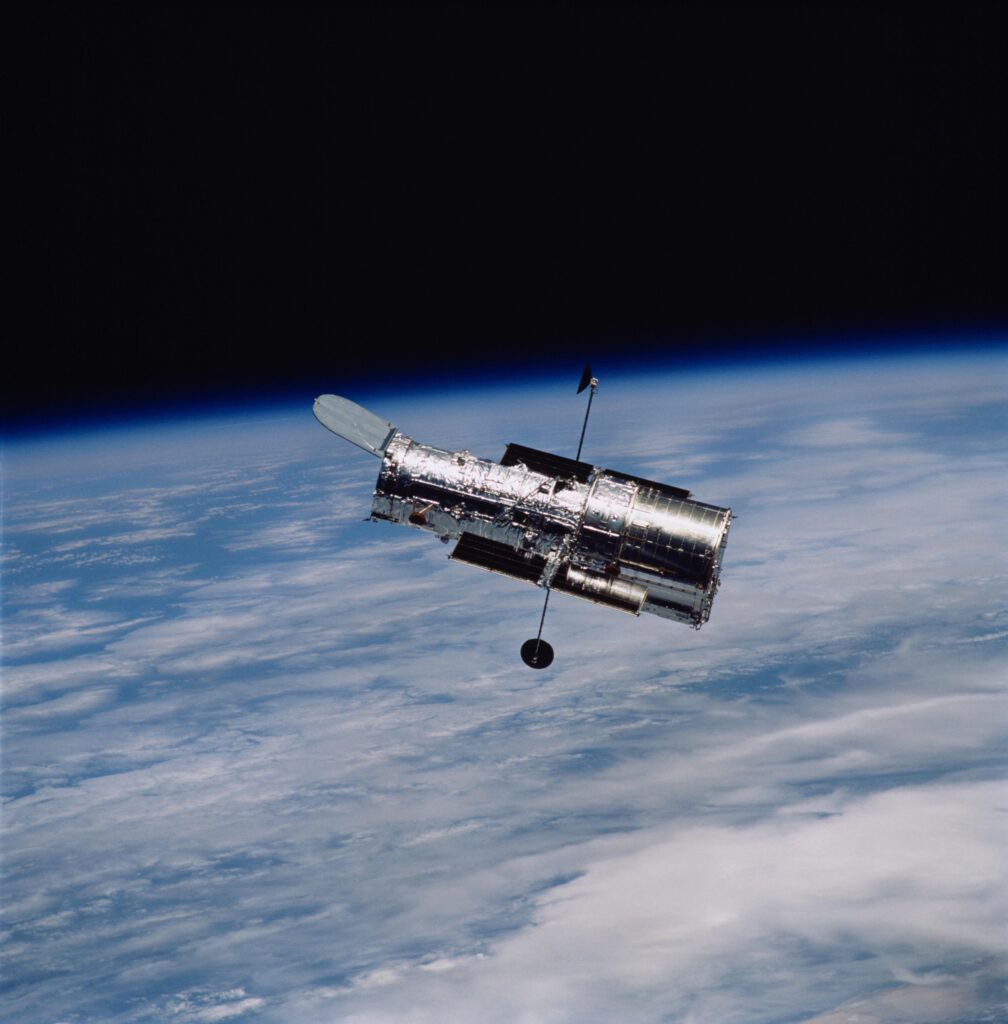Hubble Space Telescope Unveils Young Stars in Remote Spiral Galaxy
The Hubble Space Telescope has made remarkable strides in enhancing our comprehension of star formation within galaxies that lie far beyond our own. In its latest observations, Hubble captured stunning visuals of a remote spiral galaxy, revealing areas where young stars are emerging. These stellar nurseries, often concealed by cosmic dust, are essential for understanding the lifecycle of stars and the evolution of galaxies. The data gathered illustrates the complex interactions occurring within the galaxy’s spiral arms, highlighting how gravitational forces and interstellar gas collaborate to foster newly formed stars.
Notable discoveries from Hubble’s recent observations include:
- Brilliant Star Clusters: Groups of youthful, luminous stars—some merely a few million years old—are found clustered together in breathtaking formations.
- Waves of Stellar Birth: Evidence from gas and dust traces indicates waves propagating through the galaxy that signal active star formation.
- Diverse Stellar Types: A variety of stellar masses have been identified ranging from massive O-type stars to smaller A-type counterparts.
A particular area highlighted in these images has scientists buzzing with excitement; it features dense clouds of gas igniting to create new stars. Below is a summary table showcasing some characteristics observed during this study:
| Star Type | Approximate Age | Mass |
|---|---|---|
| O-type | 1-5 million years | 20-100 solar masses |
| B-type | 5-15 million years td >< td >2 -16 solar masses td > tr >< tr >< td >A-type td >< td >15 -25 million years td >< td >1.5 -2 times solar mass td > tr > |
Understanding Stellar Evolution Through Hubble’s Discoveries
The latest findings from the Hubble Space Telescope have granted astronomers unparalleled insights into how young stars are born and evolve within a spiral galaxy. These nascent celestial bodies, often enveloped in swirling clouds of gas and dust, serve as vital indicators for ongoing galactic formation processes. Thanks to Hubble’s advanced imaging technology, researchers can identify specific regions where star formation occurs while gaining insight into factors influencing these celestial entities’ life cycles. By examining spectral data, scientists can ascertain age, composition, and mass details about these young stars—leading to an enriched understanding as they transition from protostars to fully developed entities.
This research unveils several intriguing challenges associated with stellar evolution such as:
- < strong >Stellar Nurseries: strong > Areas where new stars originate due to gravitational collapse within molecular clouds .< / li >
- < strong >Feedback Mechanisms: strong > The influence that young stars exert on their surroundings , including dispersing dust and gas .< / li >
- < strong >Massive Stars: Their brief yet intense lifetimes play an essential role in enriching galactic chemistry .< / li >
- < strong >Variable Star Formation Rates: Changes in intensity regarding star creation correlate with broader galactic dynamics .< / li >
ul >Star Type Formation Phase Typical Lifespan Protostars Early 0 . 1 -10 million years Main Sequence Stars Mid 10 million – several billion years Supernova Progenitors Late 10 –100 million years The insights gained through this research significantly contribute towards our understanding of galactic ecology , illustrating how a star’s lifecycle is interconnected with broader cosmic frameworks rather than being isolated phenomena . Grasping these aspects surrounding young stellar objects aids predictions regarding both existing star fates along with potential future formations across diverse cosmic environments. p>
Future Research Directions: Enhancing Observations Of Intergalactic Star Birth With Cutting-edge Techniques
Pursuing further revelations about intergalactic star formation necessitates leveraging state-of-the-art technologies aimed at refining observational capabilities concerning birth processes among distant celestial bodies . Prioritizing
Researchers should consider utilizing : p >
- < strong Next Generation Space Telescopes : Instruments like James Webb Space Telescope ( JWST ) delve deeper into infrared wavelengths capturing light emitted by distant obscured sources .
- < strong Adaptive Optics : Ground-based telescopes equipped with adaptive optics enhance resolution significantly allowing clearer imagery around active regions .
- < strong Machine Learning Techniques : Employing AI algorithms enables analysis over vast datasets identifying patterns potentially overlooked by human researchers.
Moreover collaboration between international space agencies alongside academic institutions could promote multidisciplinary approaches towards studying intergalactics establishing
Future inquiries should focus on : p >
Evolving Galaxies
Infrared Surveys
Stellar Life CyclesHigh Resolution Spectroscopy
Cosmic Dust Impact
X-ray Astronomy
Through collective efforts combined advanced technologies scientists aspire uncover fresh perspectives surrounding mechanisms driving starlight nurturing deeper comprehension regarding evolutionary trajectories shaping cosmos itself .
The Path Ahead: Conclusion on Cosmic Exploration Through Hubbles Findings!
The contributions made by NASA’s esteemed telescope remain pivotal when advancing knowledge pertaining cosmos exemplified recently via its exploration involving youthful luminaries residing within remote spirals! Shedding light upon intricate workings behind both birth & development phases not only enriches humanity’s grasp over universe but also lays groundwork necessary future explorations! As dedicated teams continue piecing together complexities governing celestial mechanics let us remain vigilant awaiting updates unraveling mysteries one radiant beacon at time!
